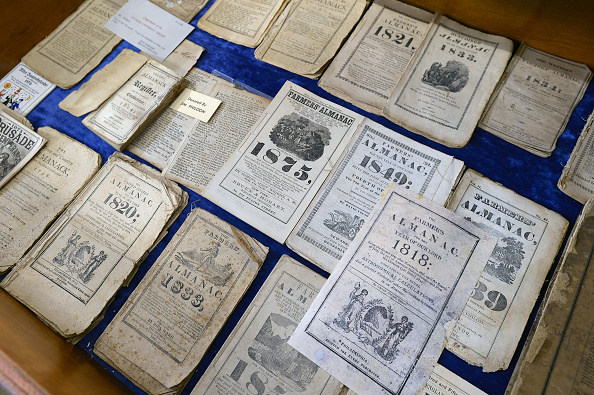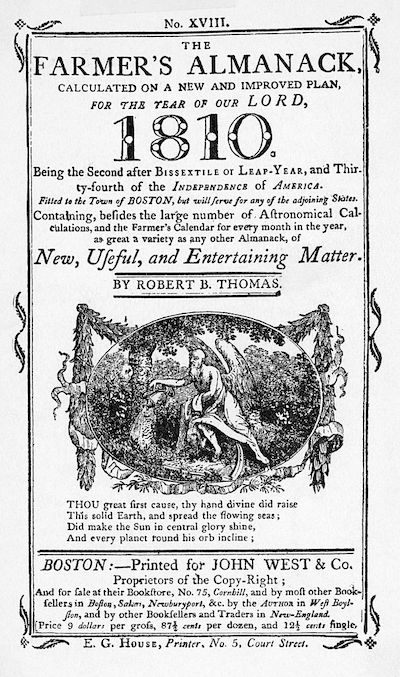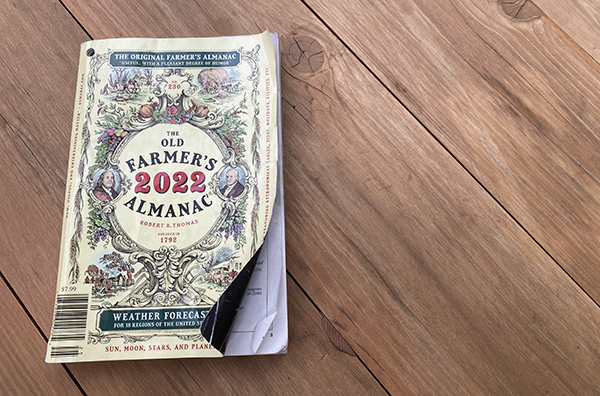While shopping at a grocery store a few months ago, my 10-year-old son, Gus, bought a copy of The Old Farmer’s Almanac with his allowance.
Since then, the kid has read it almost every night. His copy is now well-worn and tattered.
He’s been taking it over to his grandparents’ house to read it with his grandpa too. Jaju has reported that he’s been enjoying these Old Farmer’s Almanac sessions with Gus. “It’s such a fun magazine to read,” he told me.
When Gus isn’t paging through it, I’ll filch it from his room to enjoy on the porcelain throne. Excellent bathroom reading material.
What is it about this magazine/reference book that’s been in publication since George Washington was president — making it the oldest, continuously published periodical in America — that appeals to my Fortnite-playing, YouTube-watching, Generation Alpha son? As well as his Millennial dad and Baby Boomer grandfather?
To figure out the enduring, inter-generational allure of The Old Farmer’s Almanac, I did a deep dive into its history and contents. Here’s what I found out.
The History of The Old Farmer’s Almanac
The Old Farmer’s Almanac was founded in 1792 by Robert B. Thomas. When it debuted, the publication was simply called The Farmer’s Almanack. The “k” at the end of “Almanack” would be dropped, and as we’ll see, the “Old” bit got added later.

Back in the 18th and 19th centuries, almanacs — annually published reference books filled with calendar-based info like weather forecasts, agricultural planting dates, and oceanic tide tables — were a big business. Next to the Bible, they represented the most widely read literary genre in America. Running an almanac at the time was kind of like running a blog back in 2010; it seemed like everyone and their mom had one. The most famous almanac creator was of course old Ben Franklin, who pseudonymously produced Poor Richard’s Almanack.

Despite facing stiff, sizeable competition from other almanacs for readership, The Farmer’s Almanac rose to the top of the pack. What was the secret to Thomas’s success? Likely his guiding principle of making his almanac “useful, with a pleasant degree of humor.” Besides providing standard almanac fare like sunrise/sunset times and weather predictions, Thomas’s version offered articles filled with helpful info on farming and light-hearted short stories.
In 1832, Thomas added “Old” to the title of his almanac to highlight the way it had outlasted many competitors over its forty-year run, and to distinguish it from those rivals which remained. In fact, the second oldest continuously running almanac in America is called Farmers’ Almanac. You can often find it for sale in a magazine rack right next to The Old Farmer’s Almanac.
In 1848, Robert B. Thomas died, and Henry Jenkins became the new editor-in-chief of The Old Farmer’s Almanac. Jenkins introduced the distinctive “four seasons” cover design that’s still used as the cover of the periodical today.
Several editors stood at the helm during the rest of the 19th century. In 1900, Robert Ware took…



